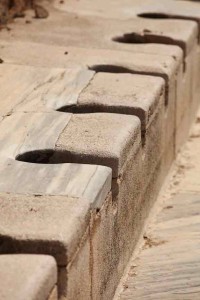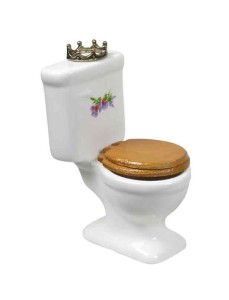The History of the Toilet

The Paperwork Behind the Term
There are many euphemisms for going to the bathroom. On ships, toilets are called “heads.” Originally, wooden boards with holes in them hung over the sides of ships. These were placed at the head of the ship.
“Going to spend a penny,” was an old saying which originated from pubic lavatories costing a penny to use. “Gotta go see a man about a horse,” was a discreet way of excusing oneself to use the restroom. “Taking a crap,” or “making a deposit,” are all terms used for one and the same.
Today, “going to the toilet” may be a crass way to say you must relieve yourself. But, to the French of the 17th century, “using the toilet,” or “toilette,” the French term, meant a dressing table – a place to freshen up. If a woman was at her toilet, she was preparing for an appearance. By the 19th century, the term, toilet, became the name of a room, but didn’t necessarily mean a place to flush.
Early Toilets
Although flushing toilets have been around since the 16th century, many homes did not have them until the late 19th century. Inside toilets were a luxury then. Most working homes, especially in the country, had an outhouse which consisted of an enclosure with one to three holes in a board. Corn cobs, newspaper, or a catalog served as toilet paper.
For the more sophisticated, chamber pots – beautifully painted porcelain bowls – kept their place discreetly underneath one’s bed or in an inconspicuous room where people could relieve themselves rather than go outside. Earth closets, a box of granulated clay over a pan, were also popular for waste disposal in the 19th century. When a lever was pulled, clay dispersed over the contents.
Invention of the Flushing Toilet
It wasn’t until the early 20th century that flushing lavatories replaced the earth closets and chamber pots. Sir John Harrington invented a flushing lavatory with a cistern in 1596, but the idea was ridiculed and dismissed. By the late 1770s, others made better designs which were patented.
 Thomas Crapper, (1837-1910), an English sanitary engineer who served for royalty, has been attributed as the person who invented the modern toilet.
Thomas Crapper, (1837-1910), an English sanitary engineer who served for royalty, has been attributed as the person who invented the modern toilet.
This is a myth. However, the name of T. Crapper Brass & Co., Ld., was engraved on many of the new flushing toilets, (called water closets) all over England.
World War I veterans, seeing the name, naturally associated it with the modern-day toilet, and called it the “crapper.” It cannot be proven that the colloquialism, “crap” came from that, but who knows?
The first pedestal toilet bowl was made in 1884. It was formed of porcelain and decorated or painted.
Today in the 21st century, we have every kind of toilet imaginable: portable potties, waterless bowls, tank on a bowl, one piece toilets, toilets that have no flush, up-flush, and dual flush.
About any style or color can be purchased to grace the place you sit upon your throne. Just make sure the “paperwork” is complete on your end.
If you live in greater San Diego County and are having toilet troubles, call 1-800-anytyme at (760) 477-0072 and find out how you can get your toilet back!
